Features of the Product
英語版.png)
This teaching material builds on the foundation of the Basic Spelling and Phonics Edition, which focused on learning basic spelling, phonetic structures, and word forms. In this next stage, the goal is to further strengthen the memory of spelling and word forms by engaging in tactile reading of words within actual sentences, aiming for functional generalization that enables learners to apply their knowledge in various contexts.
The material consists of the following two components:
1.Sentences describing illustrations
2. word list related to those sentences
Learners alternate between tactile reading of “vivid illustrations with sentences” and the “word list.” This method activates semantic memory, facilitating further enhancement of memory retention.
We have created 22 types of depictions and sentences designed to activate learners’ semantic memory.

Moreover, by reading aloud semantically rich words while receiving haptic feedback, the method strengthens the connection between the visual dictionary (visual word memory) and the phonological dictionary (phonological word memory).
This approach suggests the potential to improve RAN (Rapid Automatized Naming) and supports the development of brain networks essential for proficient reading and spelling skills.
How to Use
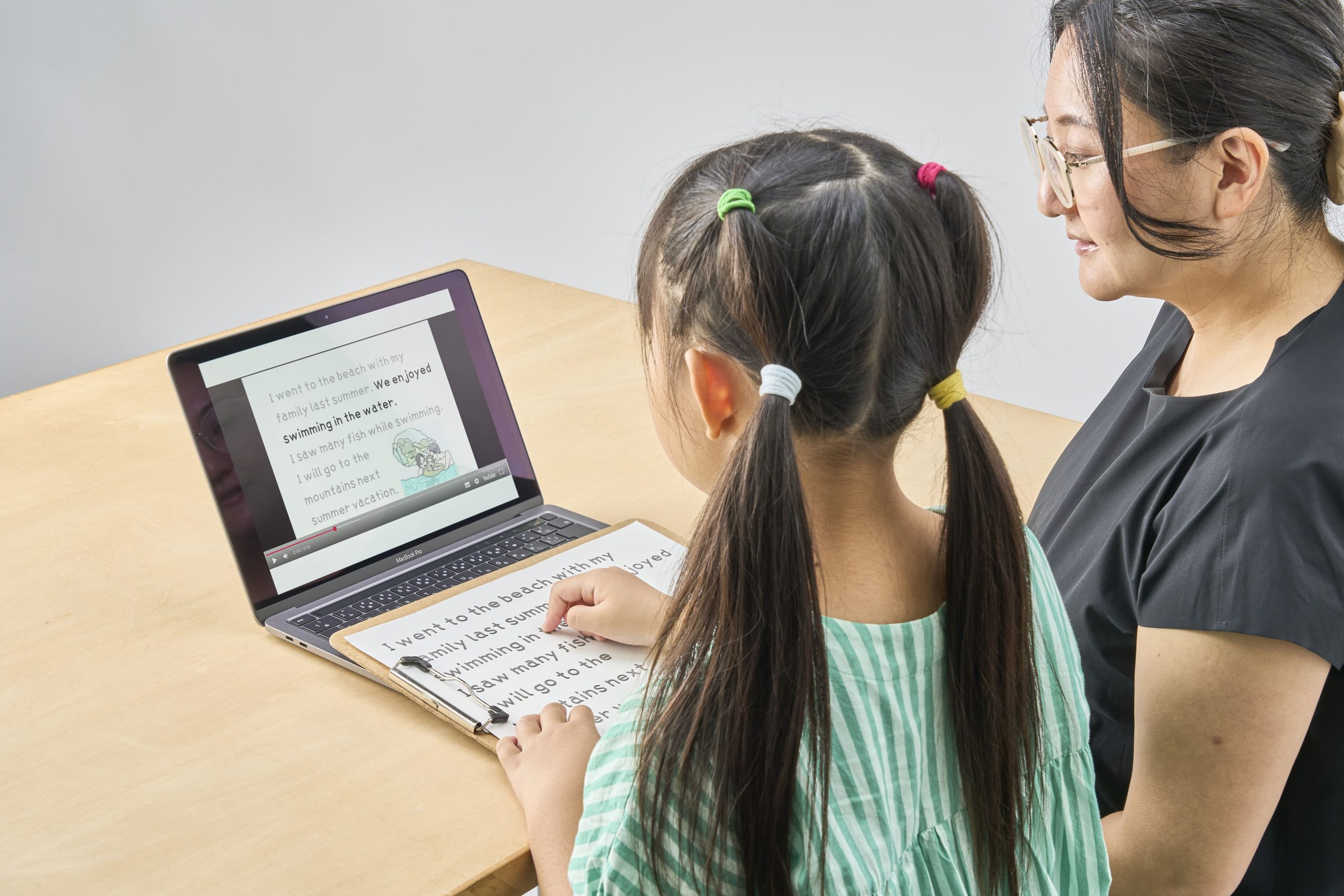
The method of tactile reading and the use of audio-visual materials are the same as in the “Basic Spelling and Phonics Edition.” However, in the “Highly Imaginable Words and Short Sentences Edition,” learners first engage in tactile reading of two depiction-based sentences, followed by a word list contained within those sentences.
By reading the depiction-based sentences first and then the accompanying word list, learners can activate semantic memory while further strengthening spelling and sound memory, word form memory, and the integration of visual and phonological representations. Detailed instructions are provided in the manual.
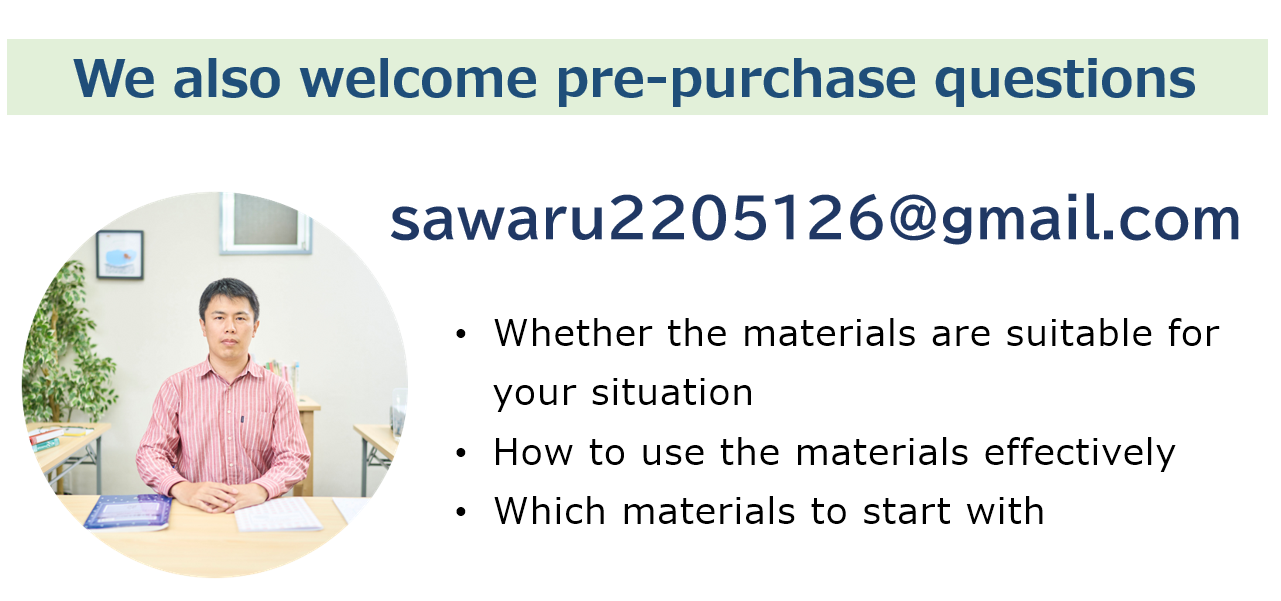
You are welcome to contact us for a free consultation about how to use the product or whether it is suitable for your needs—even before making a purchase. Keisuke Miyazaki, a licensed speech-language therapist, will respond to your inquiry by email.
Please include the following information in your message:
-
Age of the person who will use the product
-
Current status of reading and spelling skills
-
Difficulties currently being faced (e.g., in school, at work, or other areas)
-
Whether the person has any developmental disorders, including learning disabilities

Principles and Effects
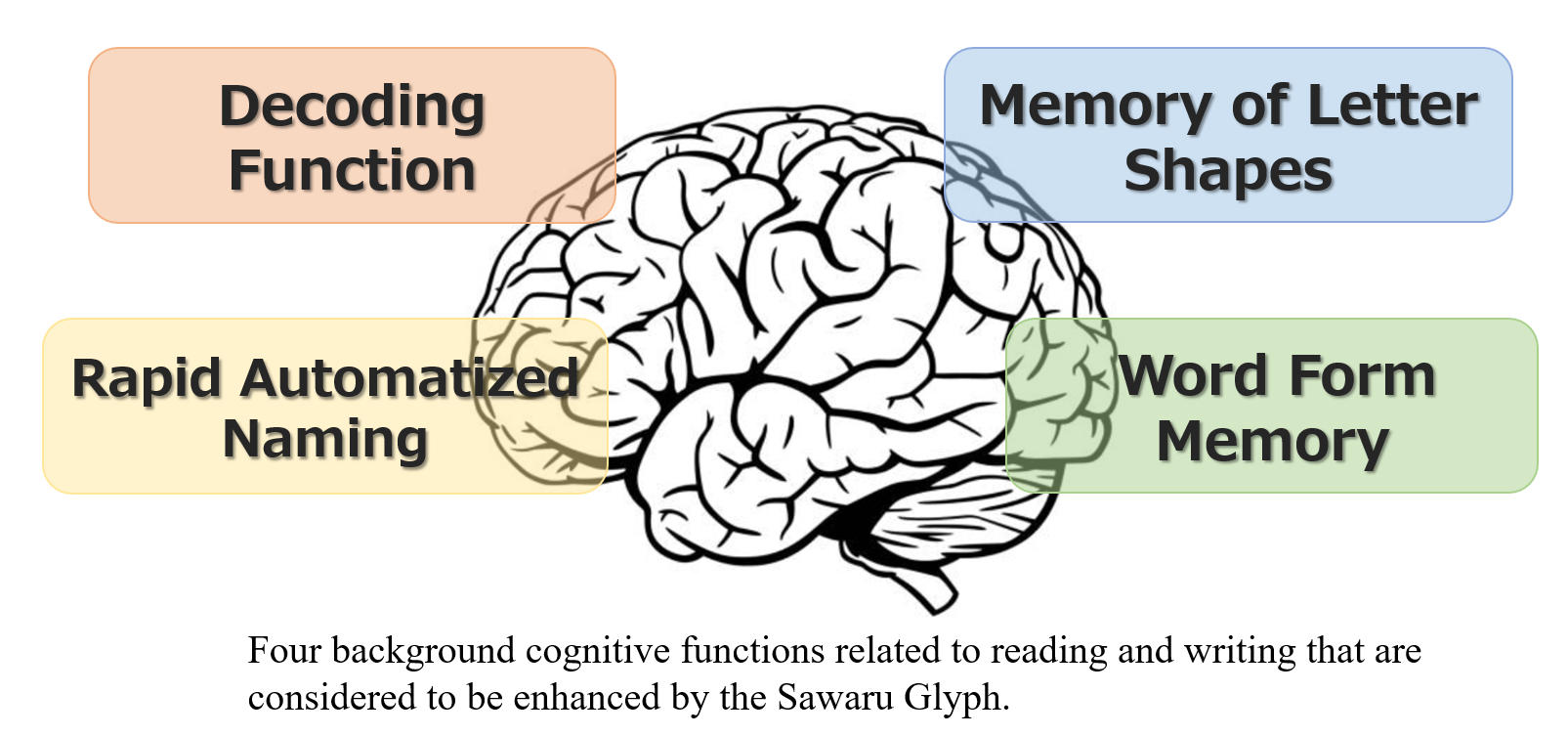
By utilizing the effects of haptics, Sawaru Glyph promotes fluent reading and enhances four cognitive functions related to letter recall. It helps improve the cognitive vulnerabilities of dyslexia.
Haptics has the following three functions:
- Haptic feedback enhances attention to the target and strengthens memory traces.
- Haptics integrates with visual information in the brain to form concrete, multimodal images.
- Haptics possesses characteristics of both visual representation (parallel) and phonological representation (sequential), serving to connect the two.
By utilizing these functions of haptics, the neural networks involved in reading and writing abilities in the brain are strengthened.
1. Formation of a precise and robust mental image of letter shapes
It has been found that not only seeing letters and symbols, but also engaging with them through haptics while seeing promotes awareness of their shapes, enhancing memory images. By utilizing haptics to interact with the letters, attention is more strongly focused on their shapes, making it easier to leave memory traces. Furthermore, research shows that haptics and vision share a common neural basis in the brain and are cognitively integrated. Incorporating haptics allows for multi-sensory memory encoding.
2. Formation of word form memory (chunking)
By receiving haptic feedback on the spelling (sequence of letters) while reading, chunking of letter sequences in memory is promoted. This enables efficient formation of word form memory. Once the word form memory is established in the mind, it becomes easier to read texts.
3. Formation of associative memory between letters and sounds
Dyslexia often involves difficulty in associating letters with sounds. While memory formation between letters and sounds is promoted by reading aloud alone, the process is further enhanced by combining it with the video and audio resources used in the tactile reading program. By providing simultaneous haptic (touch-based) interaction with letters and auditory information, more effective formation of associative memory between letters and sounds is achieved.
4. The Effect of RAN (Rapid Automatized Naming) Enhancement
RAN(Rapid Automatized Naming) refers to the ability to efficiently retrieve and name visual information, such as pictures or numbers. It is known that children with dyslexia tend to have lower naming speed. Sawaru Glyph is the first program in the world to confirm the improvement of RAN through tactile reading practice. A hypothesis suggests that reading meaningful words while engaging in tactile interaction enables the creation of a bypass within the semantic network, linking the visual lexicon associated with letter and word forms and the phonological lexicon tied to spoken words. This bypass improves the recall of letter forms, which serves as a cognitive cue to facilitate the recall of words (phonological information).
Technology and Copyrights
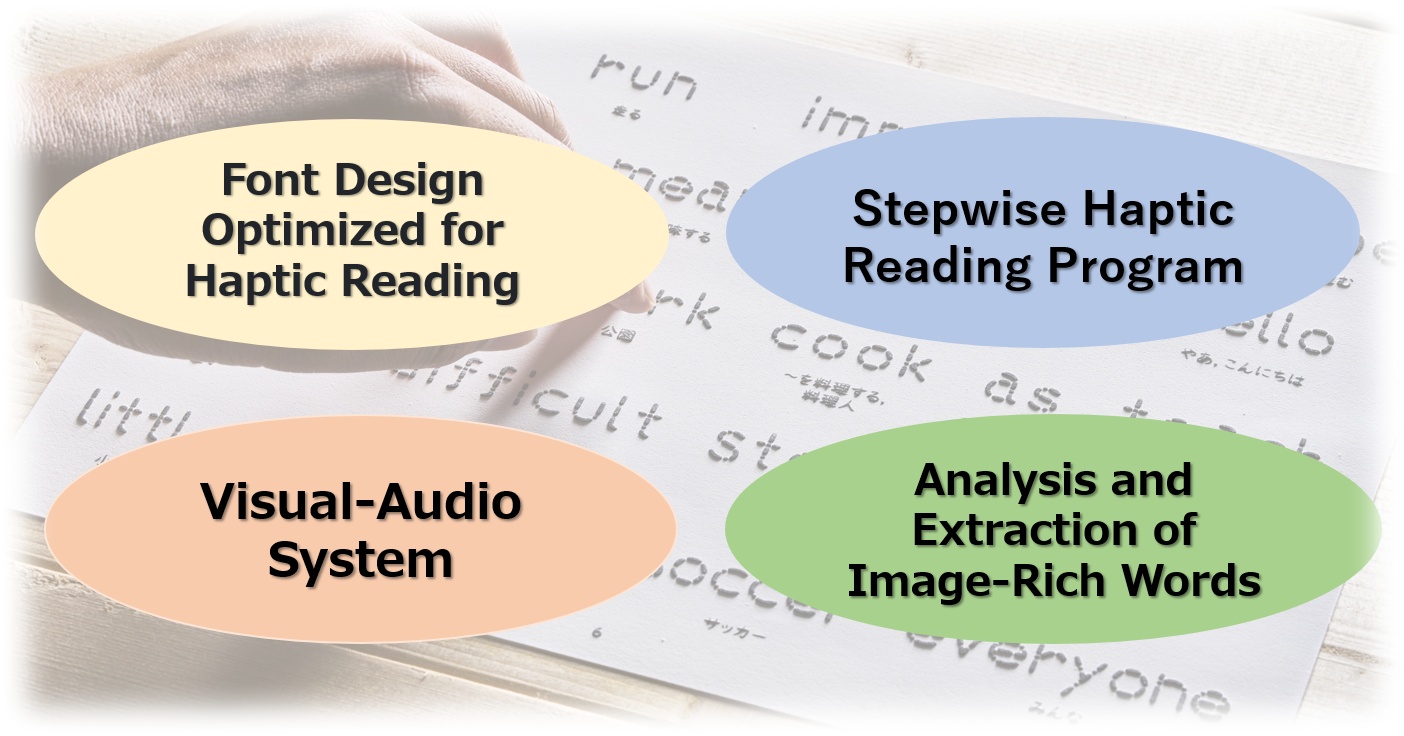
Sawaru Glyph is not merely a teaching material for tactile reading of embossed letters.
This tool integrates the following four original technologies to enable effective multisensory learning through the use of haptics:
- Font Design Optimized for tactile reading
- Audio-Visual Features for Integrating Spelling and Sound
- Stepwise tactile reading Program
- Analysis and Selection of Image-Rich Words
These technologies support effective learning by utilizing fonts designed for tactile reading and developing audio-visual systems that enhance the connection between letters and sounds. Additionally, the words used in the materials are carefully selected to prioritize semantic processing and facilitate the formation of reading and writing networks.
These technological innovations are protected by international copyrights.
For more details, please refer to the “Technology and Copyrights” page.

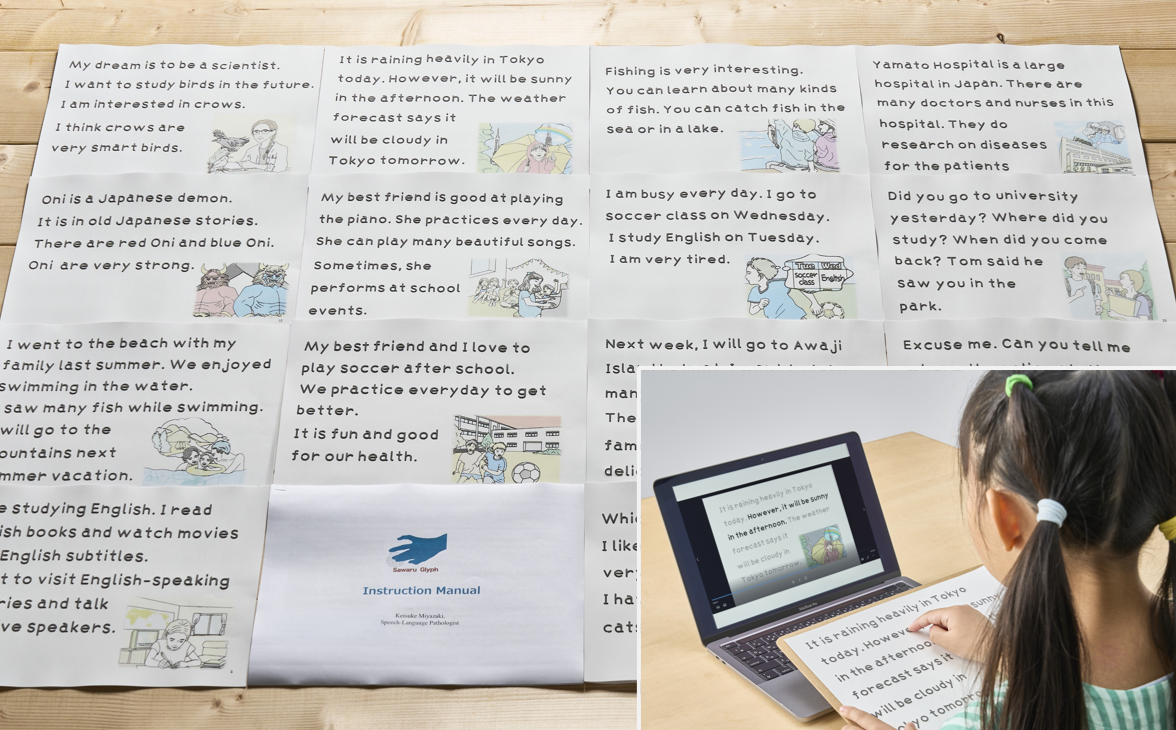




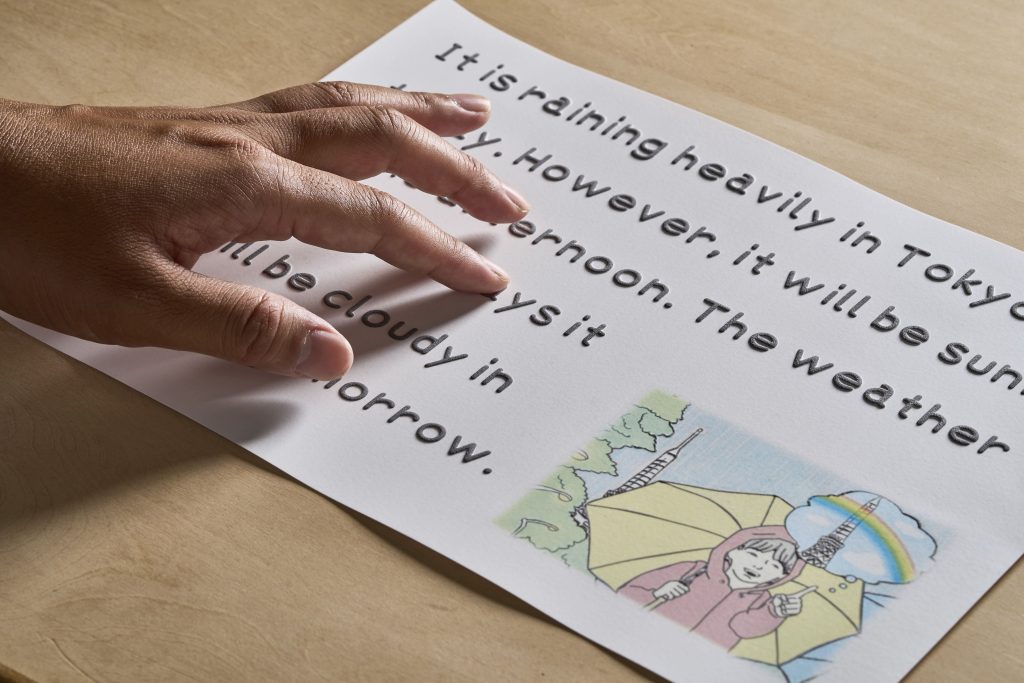

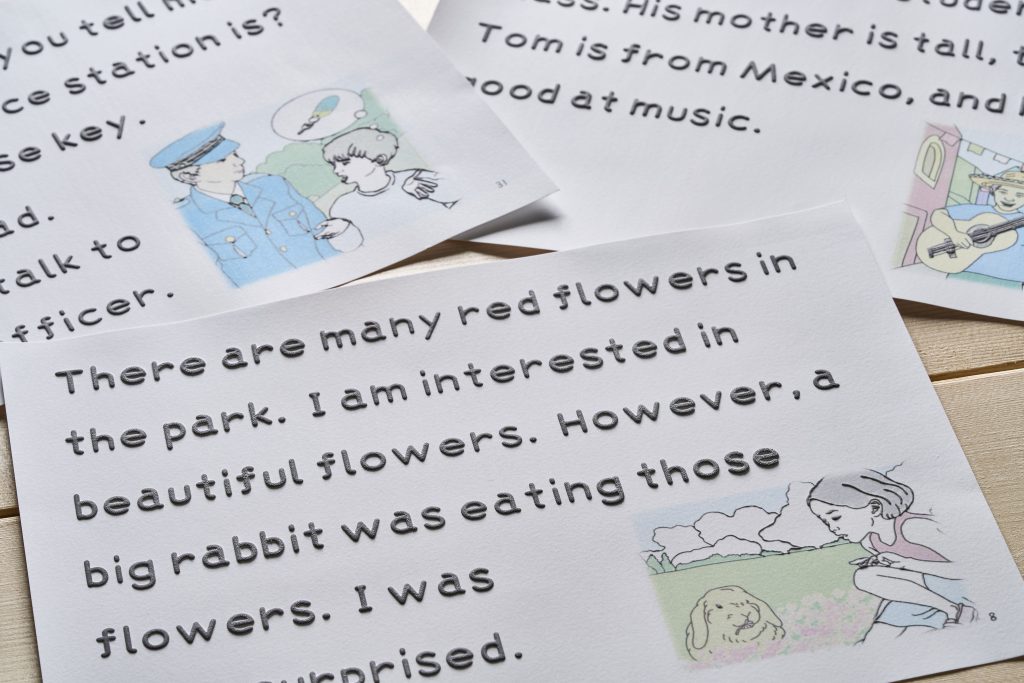
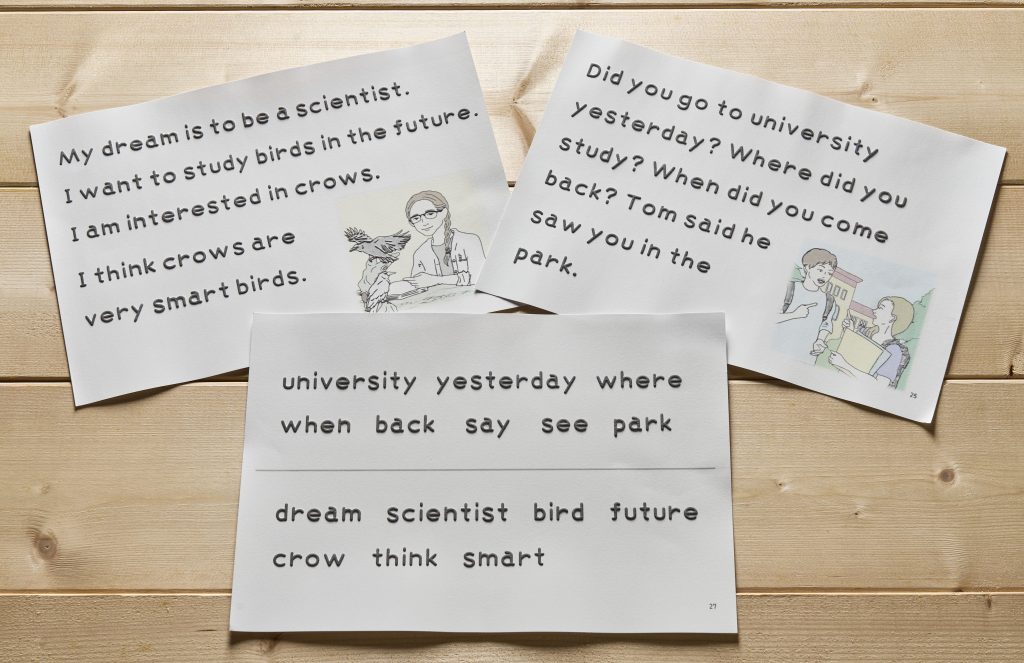
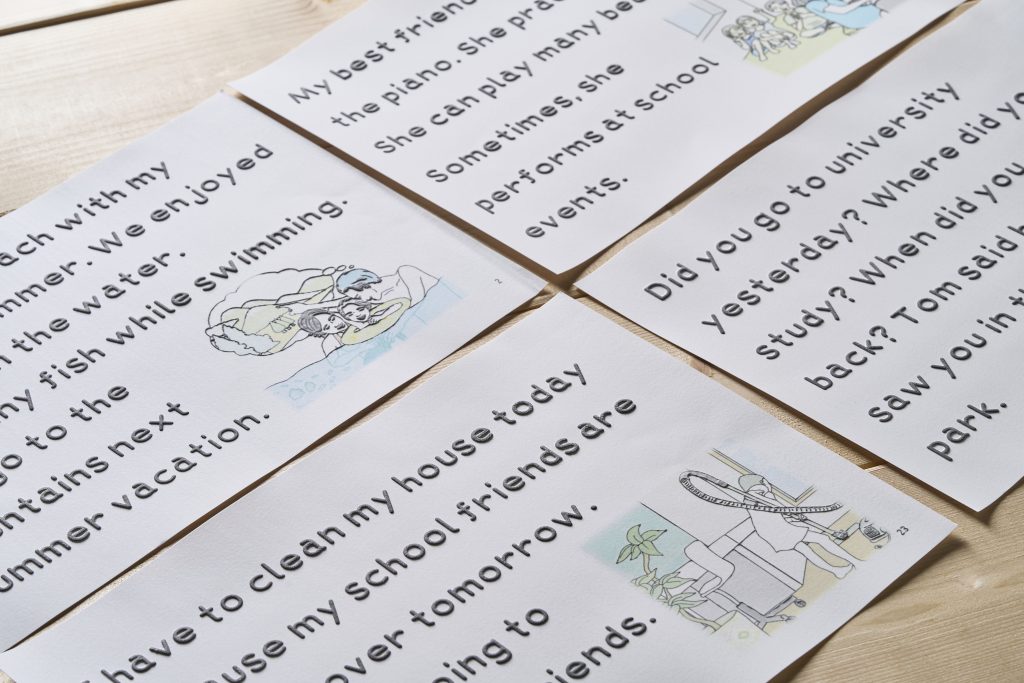
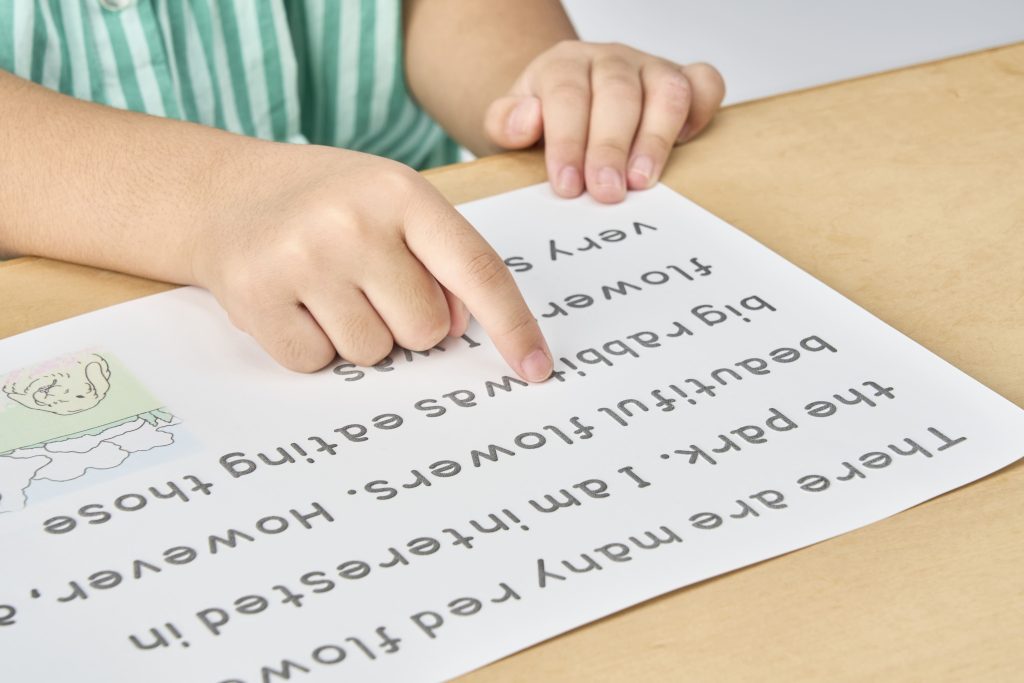
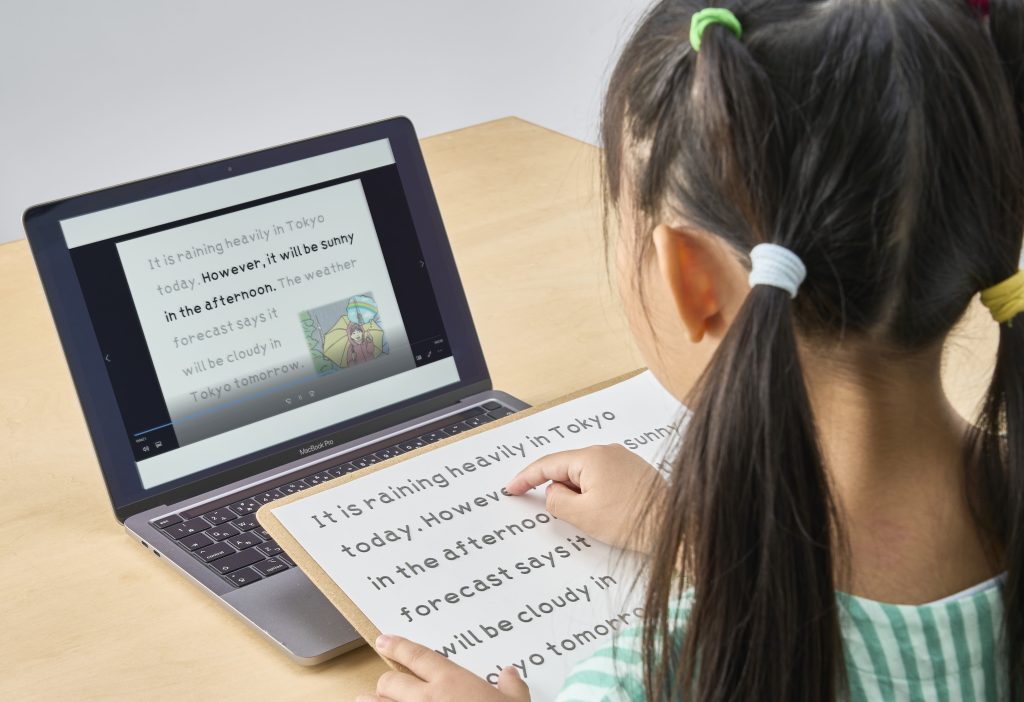
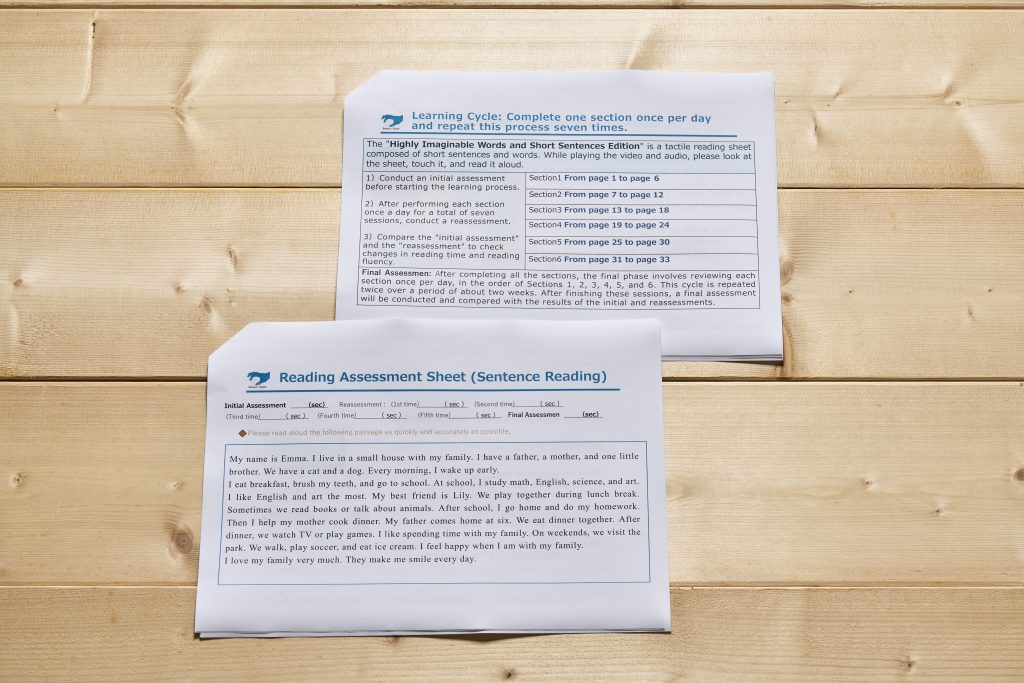

英語版.png)





